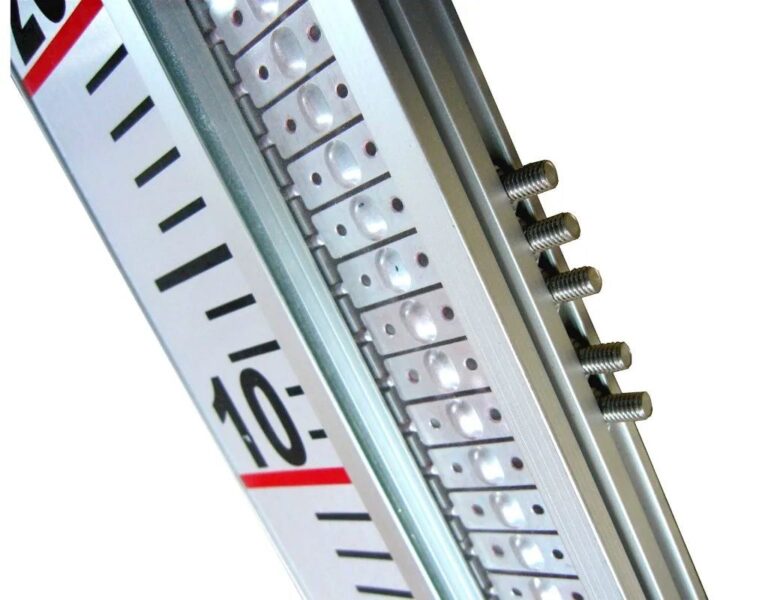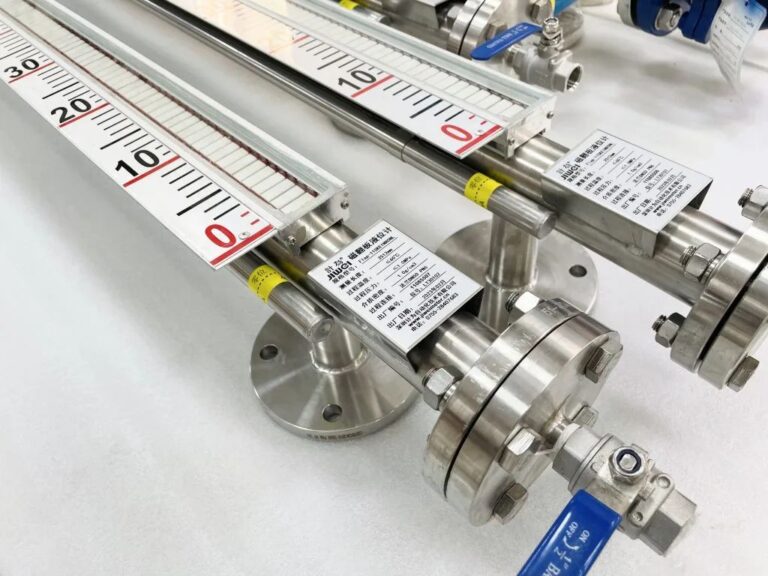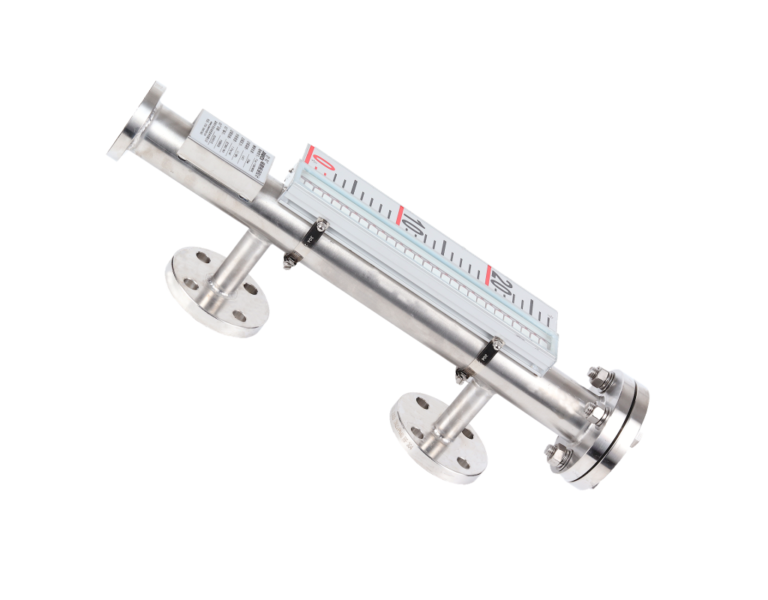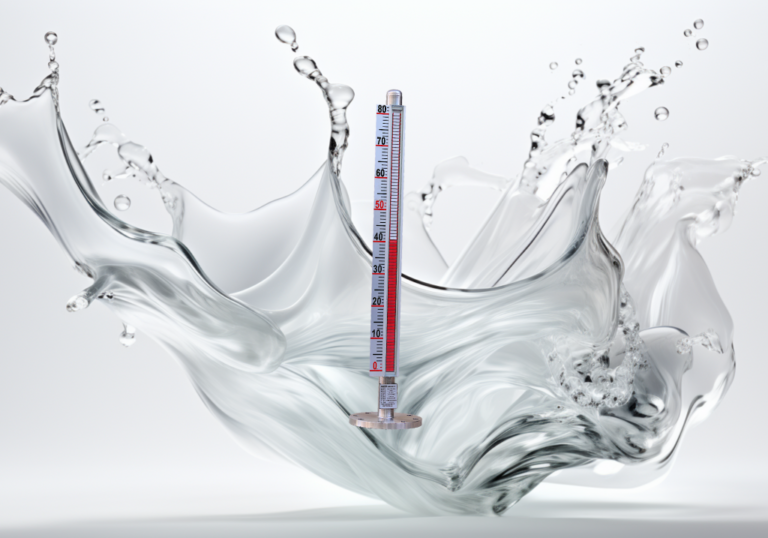Magnetic level gauges (MLGs) are highly reliable and visually intuitive instruments widely used for liquid level monitoring in industrial processes. Leveraging their unique operating principles and robust structure, they have become essential devices in both conventional and renewable energy sectors. This article explores their application scenarios, technical advantages, case studies, and operational challenges across the power and energy industry.

1. Applications in the Power Industry
1.1 Boiler and Steam System Monitoring
Magnetic level gauges are commonly installed on key components such as steam drums, deaerators, and high/low-pressure heaters in power plants. Thanks to their high-pressure resistance (up to 2.5 MPa) and wide temperature range (-20°C to +200°C), they are well-suited for the demanding steam environments.
Example: In ultra-supercritical power units, MLGs are mounted either on the side or top of the steam drum to provide real-time water level indication, helping prevent dry-burning or overfilling incidents.
1.2 Cooling Water Circulation Systems
In both open and closed-loop cooling systems, magnetic level gauges are used to monitor the liquid levels in cooling towers, condensers, and water tanks. The use of 316L stainless steel ensures resistance to chloride ions and pH fluctuations in cooling water.
Example: Emergency cooling tanks in nuclear power plants are equipped with MLGs for level alarm triggering, ensuring operational reliability during system failures.
1.3 Chemical Water Treatment Systems
Magnetic level gauges are also employed in demineralized water tanks, acid/alkali containers, and wastewater treatment tanks. Their IP66/IP67 ingress protection and explosion-proof certification (Ex d IIC T6) allow them to operate safely in corrosive and hazardous environments.
1.4 Ash and Desulfurization Systems
In coal-fired power plants, MLGs are used for large-range level measurement (0–10 meters) in slurry tanks and desulfurization towers. Integrated with remote transmitters, the level signals are sent to DCS systems for optimizing ash handling and desulfurization efficiency.

2. Applications in the Broader Energy Sector
2.1 Energy Storage Systems
In lithium-ion and flow battery systems, MLGs offer non-contact magnetic coupling to avoid electrochemical interference. Their ±1% accuracy ensures precise electrolyte level control, protecting the charge/discharge cycles.
2.2 Hydrogen Energy
For electrolytic hydrogen production units, magnetic level gauges are used in caustic circulation tanks and purified water reservoirs. Their high sealing and pressure resistance (≥1.6 MPa) make them ideal for hydrogen environments, preventing media leakage.
2.3 Biomass Energy
In biodiesel reactors and biogas digesters, MLGs with wide measuring range (up to 5 meters) and anti-fouling design effectively monitor viscous media levels, reducing the risk of buildup on the float.
2.4 Traditional Energy Applications
Fuel Oil Tanks in Thermal Power Plants: Top-mounted MLGs monitor heavy oil and diesel levels, with remote signal transmission to control rooms for automated refueling.
Oil-Gas Separators in Oilfields: Their anti-vibration structure provides stable interface level readings between oil, gas, and water phases, improving separation efficiency.

3. Technical Advantages
Core Features:
Visual Indication: The red-white magnetic flaps provide an intuitive display for quick on-site inspection.
High Reliability: With no mechanical transmission parts, MLGs offer long service life and low failure rates—ideal for continuous power plant operation.
Function Integration: Can be paired with magnetic switches and remote transmitters (e.g., Reed-11) for alarms, 4–20 mA signal transmission, and automatic control.
Environmental Adaptability: Available with PTFE linings for corrosion protection, explosion-proof designs, and insulation jackets for steam/electric heating.
Installation & Maintenance:
Flexible Installation: Supports side or top mounting with flange/threaded connections—suitable for underground tanks or tight spaces.
Easy Maintenance: Simple structure requires only periodic float cleaning and gasket replacement, reducing operational costs.

4. Case Studies
🔹 Boiler Steam Drum in a Coal-Fired Plant
Configuration: Top-mounted MLG with SS316L body and 0–2m range, integrated with SW-21 magnetic switch
Result: Prevented 3 overfill incidents, reduced maintenance costs by 40% annually
🔹 Electrolyte Monitoring in a 10MWh Energy Storage Plant
Configuration: Remote-transmission MLG linked to replenishment pumps
Result: Improved system stability by 25% through real-time level monitoring
🔹 Emergency Cooling Tank in a Nuclear Power Plant
Configuration: Explosion-proof MLG with dual-channel redundancy
Compliance: Meets ASME nuclear-grade certification requirements
5. Challenges and Solutions
| Challenge | Description | Suggested Solution |
|---|---|---|
| Media Limitations | MLGs are unsuitable for ultra-low conductivity liquids like pure oils | Use guided wave radar or RF admittance level sensors as complementary technologies |
| High Temperature/Pressure | Over 200°C may exceed float tolerance | Use custom float materials (e.g., Hastelloy) for extreme environments |
| Maintenance | Sticky or sediment-laden media can affect float movement | Schedule routine cleaning and sludge draining procedures |

6. Conclusion
Magnetic level gauges have proven to be indispensable tools in the power and energy industry. With their simple structure, exceptional reliability, and broad adaptability, they support safe and efficient operation across diverse systems—from traditional thermal power to hydrogen and lithium energy applications.
Looking forward, the integration of magnetic level gauges with IoT platforms, predictive maintenance systems, and AI diagnostics will further expand their capabilities, especially in the era of smart power plants and energy digitization.
